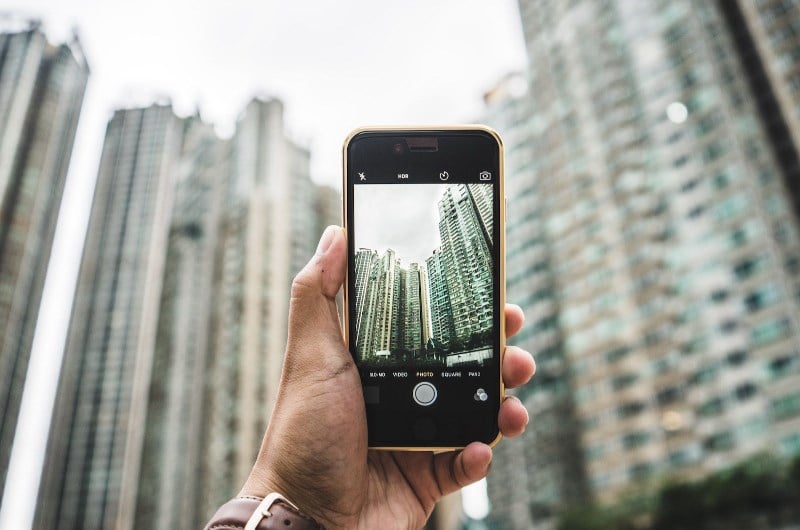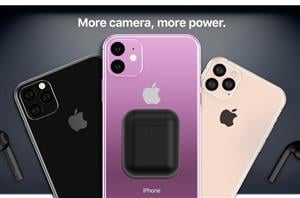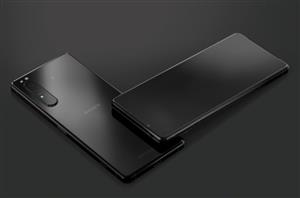iPhone Photography Tips - A Comprehensive Guide
With the iPhone camera you can take good photos as if you are working with an expensive single lens reflex camera. With our tips you can cope with difficult situations such as back light or darkness.

Take Photos even faster
iOS offers two ways to activate the camera app even when the iPhone is locked - with the
- Take Photos even faster
- Taking Professional Photos without a Tripod
- Avoid Distorted Faces
- Open up Unusual Perspectives
- Take Photos Without Shaking
- Use exposure compensation
- Live photos without Apple
- Take flawless panoramas photos
- Focus manually
- Make photos harmonious
- Capture the right moment
- Avoid commonplace motifs
- Maximum depth of field in portrait mode
- Better backlight photos
- Start the camera app with Siri on demand
- Photographing shooting stars and fireworks
- Contortion-free selfies
- Animated GIFs from Live Photos
- Produce photos with reflections
- Portrait mode with older iPhones
- Illuminate portraits at home
- Clean skin without retouching
- More processing potential through RAW
- Paint with light
- Avoid a crooked horizon
- Depict far away things
- Unlimited storage for photos
- Save unsuccessful images with filters
- Night portraits without flash
- Straighten falling lines
- Create special images with your own filter
- Take photos with a retro look
- Find RAW recordings in Photos Library
- Learn from good pictures
- Choose the right format
- Unlock additional editing functions in the Photos app
- When landscape panoramas are worthwhile
- Remove haze from photos
- View photos taken nearby
- Overcome differences in contrast that are too high
- Using the right light
- Avoid image noise
- Bring calm into the picture
- Take extremely high-resolution photos
- Correct overexposure and underexposure
- People clone without software
- Foreground makes the picture healthy
- Make big things look small
- Merge motifs together
- Photograph butterflies more easily
Alternatively, you can swipe the control center into the picture from below (or on the iPhone X from the top right) and select the camera icon there.
Unfortunately, camera apps downloaded from the App Store cannot be accessed very quickly. After all, some apps come with widgets. All you need to do is swipe from the left edge of the screen to the right and tap the corresponding button on the widget to start the app. In this case, however, you still have to unlock the iPhone before using it.
Taking Professional Photos without a Tripod
Although the iPhone 6 Plus and 6s Plus and all subsequent iPhone models have an integrated image stabilizer, which enables longer exposure times without blurring, this also reaches its limits at some point. In order to prevent blurring in dim light, you should lean on or support yourself.
It is essential to avoid cramped postures and press your elbows against your body. Half exhaled, your upper body is also under less tension than if you take a deep breath and then hold your breath. A case often improves the grip, and you automatically grip the iPhone less strained. Some photo apps such as ProCamera or Camera + only trigger when the photographer's own movements fall below a certain threshold.
Avoid Distorted Faces
All iPhones are equipped with a wide-angle lens, the angle of view of which corresponds to that of a 28 mm small picture lens. This is great for group photos even in confined spaces or for taking landscape photos. It is less suitable for close-up portraits, for example, as it distorts proportions and makes a person's nose appear too big.
You can help yourself with the digital zoom, which (except for the iPhone 7 Plus, iPhone 8 Plus and iPhone X) allows a maximum of five times the magnification of the subject and thus a greater distance to the picture. You activate it by spreading your fingers on the preview image. The proportions of the face take on normal features again from two times the magnification.
The digital zoom does nothing but cut something away from the edge of the picture. The zoomed photos have the same resolution as the unenlarged photos, but show fewer details. The iPhone simply adds the missing pixels.
The only exceptions: the iPhone 7 Plus, iPhone 8 Plus and iPhone X double the size with the help of a second lens without loss - the image section then corresponds to a classic normal focal length of almost 50 millimeters in 35mm format. To do this, tap the button labeled “1x” or select the portrait mode, which is only available in conjunction with the long focal length.
Open up Unusual Perspectives
Everyone knows shots at eye level. Images that show what is happening from an elevated position (bird's eye view) or from below (frog's eye view) are often more exciting. Impractical: The iPhone display can then be seen only with difficulty.
On the other hand, if you check the image section with the Apple Watch, you neither have to lie on the floor nor drag a ladder along.
You place the iPhone on a tripod, on a flat surface or have a friend hold it - if sufficiently short shutter speeds are possible.
The subject to be depicted is focused by tapping the preview image. If you like, you can zoom in by turning the digital crown. A long, strong press on the watch display opens a small menu that can be used to switch between the main and front camera, switch the flash on and off, and activate HDR or live mode. With watchOS 4 you can also remotely control video recordings of the iPhone in this way.
Take Photos Without Shaking
It helps to prevent camera shake by putting the iPhone down somewhere or mounting it on a tripod. But even then, triggering with a tap of the finger can set the device in motion. A remote control can help. A normal cable headset with volume buttons is suitable for this. Pressing the plus button on the earphone cable triggers the recording. Many manufacturers of selfie sticks, iPhone grips or panoramic tripod heads include Bluetooth remote controls. You can also use it with the iPhone alone.
Alternatively, you can use the self-timer: In Apple's camera app, tap the icon with the timer symbol at the top right and then choose whether the recording should be triggered automatically after three or ten seconds.
Use exposure compensation
If the exposure is unbalanced, you have to touch it up manually. To do this, first select the subject to be focused with a tap of your finger. Then swipe - without taking your finger off the display - either up to lighten the image or down to darken it. As soon as you focus again, you will also need to repeat exposure compensation.
Live photos without Apple
Live Photos only support iPhones from the 6s. If you have an older device, you can use the free Microsoft Pix app. The camera app continuously takes pictures and selects the best after the shutter release. With suitable motifs, she combines the series images into a short video.
Take flawless panoramas photos
The iPhone has mastered panoramic photos for a long time. The problem: For successful panoramas you have to move the iPhone up or down (or right or left) at a constant speed without deviation. The app does not criticise errors, but you can see them later in the picture.
The all-round recording is easier if you put the iPhone upright in an empty cup and carefully turn it with two fingers. This way the iPhone doesn't break out in any direction and you can concentrate better on executing the movement evenly. However, you cannot use it to create 360-degree panoramas, as can now be seen more often on Facebook, for example. Special cameras are required for this (see Mac & i issue 6/2016, page 106).
Focus manually
Moving subjects are a challenge for any autofocus. The number of incorrectly focused images can sometimes be drastically reduced by first focusing on a point that lies in the plane of movement of the subject.
Then keep this point pressed until the focus area becomes larger and the message “AE / AF lock” appears. Both autofocus and exposure are then fixed and no longer change. The lock can only be removed by tapping again on the preview image. Optionally, you can now correct the exposure as described under "Use exposure correction". If everything fits, you can take any number of photos in a row without the autofocus intervening.
Make photos harmonious
Many photos have one thing in common: the main subject and horizon dominate the center of the picture. The centric arrangement usually only works well if it plays with symmetries. In all other cases you create harmony in the picture by a slightly offset picture division. According to the rules of the golden section, you divide the picture into two unequal parts with a ratio of 1.618 or - easier to implement in practice - a ratio of 5 to 3.
This divider is relevant for both the horizontal and the vertical arrangement in the image. Ideally, the center of the object is at the intersection of the lines created by the division. The ProCamera app displays guidelines corresponding to the golden ratio.
Almost as expressive is the division of the picture according to the rule of thirds, which is a strong simplification of the golden section. Instead of dividing the image into nine areas according to a crooked value, you divide it into thirds horizontally and vertically. Align your motives with it. Place more compact objects on the intersection points. Auxiliary lines according to the rule of thirds can also be displayed in the pre-installed camera app via the iOS settings.
Capture the right moment
Triggering at exactly the right moment rarely succeeds. It is better to switch on the series picture mode, just hold on and then look for the best picture from the series. The iPhone 5 only manages 2.5 frames per second, since the 5s all iPhones take 10 frames / s.
You don't have to adjust anything, just keep the shutter button pressed. As soon as the iOS camera switches to serial picture mode, it displays a counter for the pictures taken. In series picture mode, the app does not adjust the focus, but adjusts the exposure continuously. However, the latter only works if the AE / AF lock has not been activated beforehand (see “Manual focus”).
Important: If you want to capture fast movements, there should be enough light. Exposure times of 1/10 of a second are possible even at 10 frames / s. A lot can still be blurred, such as foliage moved by the wind.
Avoid commonplace motifs
Take souvenir photos of yourself and your travel companions, but don't waste any space on bridges, fortress walls and other classic tourist magnets. Instead, focus on details. In this way you gain time that you can devote to the sights in peace and you might discover something not every tourist sees.
Capture photos of what makes the visited places special without showing the big picture. Go on a photo hunt if the other tourists have not (yet) left the hotel. Take photos before sunrise, in the rain, or during live broadcasts of major football matches - but outside the stadium. Use the NightCap camera to take long-term exposures of busy places of several minutes - then tourists blur into pale shadows.
Maximum depth of field in portrait mode
iPhone X, iPhone 8 Plus and iPhone 7 Plus have two lenses that Apple uses to simulate depth of field. The distance to the subject may be between 0.3 and 2.4 meters. The further away you are, the smoother the blur will be.
If you want to emphasize an object or a person from the background, you have to get close. You can achieve even better results with the background further away from the subject. Do not place the model directly against the hedge, but one to two meters in front of it.
Better backlight photos
Whether in bright sunshine with a light background, in the late afternoon in the warm backlight or in rooms in front of the window: Under such conditions, people usually appear as a dark silhouette - or the background sinks into shadow. Even with exposure compensation and HDR function, there is little to tear. The solution: turn on the flash. It is not only useful to compensate for a lack of natural light, but also to compensate for strong contrasts as in the scenarios mentioned.
If the light output of the LED flash is insufficient, LED flashlights or lights or a reflector can also help. For this purpose, a white styrofoam sheet or a rescue blanket can be misused. You can get both in the hardware store for a few euros. Ideally, the reflector should be aligned in such a way that it throws the backlight onto the main subject.
Start the camera app with Siri on demand
If the voice assistant is activated in the settings under “Siri” for “Access when locked”, the command “Hey Siri, start the camera” is sufficient. If you tell her “Hey Siri, take a selfie!” She starts the camera app with the front camera activated. The modes for panoramas and square photos can also be called up directly. On devices before the iPhone 6s and iPhone SE as well as the Pro-iPads, you have to hold down the home button for a long time while speaking.
Photographing shooting stars and fireworks
Shooting stars are often only seen by chance, but even swarms of shooting stars that have been announced represent a photographic challenge. Setting up fireworks in an appealing way is not that easy with the iOS camera app.
The NightCap camera app also makes it possible with the iPhone - and thanks to the low ISO values, it is surprisingly noise-free. Depending on the mode, it allows shutter speeds of up to one second or even up to 15 minutes.
In order for this to work, you also need a tripod. The app comes with short instructions for taking long exposures, star trails, the course of the ISS or shooting stars. The developer provides more detailed tutorials on his website.
Contortion-free selfies
Selfies in particular, but also some normal shots, sometimes force the photographer to acrobatic contortions of fingers when trying to hold the iPhone securely and at the same time hit the shutter release on the display. You hold your iPhone much more securely if you use one of the volume buttons.
IPhone 5, 5s and SE in particular offer a good grip thanks to the hard edges of the devices. However, users of newer iPhones have to be careful not to accidentally press the opposite power button when triggering.
Animated GIFs from Live Photos
Produce photos with reflections
Products, photographed against a black background, which are reflected in the floor, look very noble. Achieving this yourself doesn't require an expensive photo studio or Photoshop. All you need is a black acrylic or glass plate - the latter does not scratch easily.
To get the background black, just darken the room. You can get the longer exposure times under control with a table tripod. You can prevent reflections from windows or furnishings with gray cardboard.
Because the iOS camera app quickly increases the ISO values in low light and thus increases the image noise, it is better to use apps that allow manual settings.
Flannl (free of charge) or ProCamera are ideal for this. A desk lamp or an LED light that illuminates the product from the side can serve as the light source.
Portrait mode with older iPhones
All users who do not have an iPhone X, iPhone 8 Plus or iPhone 7 Plus have to forego the depth of field effect when taking a picture, but can implement it later. For example with the free app Patch. It uses artificial neural networks to recognize the object to be cut out and then softens the background. The blurring can be regulated in five stages, errors can be roughly corrected.
Like Portrait Mode, Patch doesn't work perfectly either. Somewhat more precise results can be achieved on iOS with the Pixelmator app. Their “quick selection” cropping tool recognizes objects more reliably. The selection made in this way can easily be expanded, reduced, refined and reversed with five additional clipping tools. The intensity of the blur effect can be infinitely varied. Even more realistic blur gradients are possible on the Mac, for example with the "Field blur" filter in the Affinity Photo image processing program.
Illuminate portraits at home
If you take product or portrait photos at home, you are more flexible when it comes to illuminating the subjects than outdoors. The crux of the matter: the usual room lighting is dramatically less powerful than sunlight, even if it is subdued by thick layers of cloud. The solution: construction lights from the hardware store. They cost little and shine brightly, are comparatively compact and are often sold together with tripods.
However, they usually shine in different light colors, which together with the room lighting or the daylight penetrating through the window result in unsightly mixed light. This is extremely difficult to correct even with Photoshop. You can standardize the light colors of the different lamps relatively easily with colored foils. Blue foil adjusts warm white light to daylight temperature, yellow or orange foil gives warmer tones. Other colors are suitable for illuminating the background in color. This can be a white wall, for example. Alternatively, you can use white or black molton fabric (all product recommendations via web code), bed sheets or rescue blankets.
Clean skin without retouching
Blemishes are usually annoying in photos and cause a lot of work in post-processing if you want to get rid of them. Instead, choose a slight overexposure when taking photos (see tip 6 “Using exposure compensation”), skin automatically appears smoother. Ideally, the person to be photographed stands in front of a white wall and is brightly clad.
You can also use the LED flash or additional lighting. The effect called "HighKey" works best in black and white. Therefore, select the filter "B / W light" in the camera app (tap on the colored circle symbol in the top right).
More processing potential through RAW
The iOS camera app only saves photos as JPEGs or, since iOS 11, also in HEIF format on new devices. Since iOS 10, images can alternatively be recorded in the lossless raw data format RAW (recognizable in the file name by the extension .dng). It is useful for subsequent adjustments without any loss of quality (see Mac & i issue 6/2016, page 90).
However, this requires an iPhone 6s, 7, SE, 6s Plus or 7 Plus and an app that supports this format. The Flannl app (free) or the ProCamera or Halide app can be used for this. Many other photo apps now also support this format; you can find them with the search terms RAW and DNG in the App Store.
Paint with light
If you move a light source, such as a flashlight, through the picture during a long exposure, it appears as a strip of light on the photo - a cool effect. The ColorX app (free of charge) colors the display of a second iPhone so that you can use it to draw colorful light trails.
MyLightPaint Pro on iPhone or iPad opens up more creative scope for creating light, with which rainbow effects and multi-colored light paths can be drawn.
To take long-term exposures, you can use the NightCap camera, which has the Light Trails mode especially for painting with light.
Avoid a crooked horizon
A crooked horizon spoils every picture. This can be remedied by a grid of lines, which divides the image in height and width into nine areas of equal size. You activate it in the iOS settings under "Photos & Camera".
In addition to aligning the iPhone, the grid also helps with the image design. The horizon at the sea is aligned with the lower line, the skyscrapers of the big city with one of the two vertical auxiliary lines. Alignment is even better with a digital spirit level, such as the one offered by the ProCamera app. If something goes wrong, it can be straightened out in the edit mode of the Photos app on iOS (button with the three sliders).
Depict far away things
If you still have grandpa's binoculars in the attic, you can use them as a makeshift telephoto lens. With a little practice, it is sufficient to simply hold the iPhone camera to one of the eyepieces.
Adapters with which the iPhone can be fixed to the binoculars promise a higher success rate when taking pictures of distant subjects. Some adapters are also suitable for mounting the iPhone on telescopes or spotting scopes. Then even recordings of planets and star nebulae are possible.
Unlimited storage for photos
Apple charges up to £10 per month for more than 5 GB of iCloud storage space. If you only need more capacity to save your pictures, you will find a free alternative on Google. Google Photos (free, registration required) offers unlimited cloud storage space for images in JPEG format.
The app either uploads all photos immediately or only those that the user manually selects. In any case, you should read Google's terms of use and privacy policy before using the offer. Although the photos are hidden from view of others, Google reserves the right to analyze them for its own purposes. On the one hand, to spoil the user with automatically generated panoramas, GIFs and albums, on the other hand, also for advertising purposes.
Save unsuccessful images with filters
You don't really want to part with some shaky or noisy photos, because it is perhaps the only memory of a beautiful moment. This is also not necessary, because the art filters in the Prisma app turn them into little treasures in the style of great painters. The app offers a total of 41 free filters, and more can be downloaded from a shop - so far also free of charge.
If you don't like your pictures ending up on the manufacturer's servers, you should activate flight mode before starting the app. Then, however, there are significantly fewer filters to choose from.
Night portraits without flash
A flash provides a balanced exposure, but often does not look very atmospheric. Anyone who is out with friends at night usually has a different memory. It is therefore better to deactivate the flash and look for other light sources instead. Neon signs are a good option, as are street lights.
It is important to note that the person to be portrayed must get as close as possible to the light source, because the light it emits is usually darker than it appears. You can avoid blurring as described in tip 5, a lower ISO value helps against image noise. You can set this manually with apps like Flannl.
Owners of a dual camera iPhone should forego the depth of field effect if necessary, because it uses the second lens, which not only has a longer focal length, but also a smaller aperture. Both promote blurring.
Straighten falling lines
If you tilt the iPhone, parallel lines suddenly run towards a common point, for example when trying to somehow map a large building from a short distance in its entirety.
Often afterwards it looks as if the facade is tilting backwards. If you left some space all around during the recording, you can erect the building again later. The SKRWT app is suitable for this. It comes with a photo extension, which facilitates the editing workflow.
Already during the recording you can avoid converging lines by increasing the recording distance and aligning the iPhone as vertically as possible. Photo apps with optional tilt sensors such as ProCamera help. The digital spirit level is called "Tiltmeter" and works in every position.
Create special images with your own filter
If you want to stand out with your pictures on Instagram and Facebook, you can use filters that you have created yourself to make the photos special. You can create your own effects, for example, with the Darkroom by Bergen app (free with in-app purchases). The free version offers editing tools for brightness, contrast, saturation and color temperature as well as some prefabricated filters as a basis for your own creations.
The Pro Kit, available by in-app purchase, comes with a gradation curve and color tools. Nice: A protocol allows individual manipulations to be reversed at any time. The finished adjustments can finally be saved as a filter that can be named as desired.
Take photos with a retro look
Retro is trendy. Apps that make iPhone snapshots look old or simulate aberrations from cheap cameras from the 1970s, too. Hipstamatic goes even further. It not only mimics photos from analog cameras, but optionally also their housing.
The effect filters are implemented as virtual lenses, films and flashes that can be purchased individually or in packages via in-app purchase. They can be combined as desired and thus open up a multitude of pretty vintage effects.
Funny: if you shake the iPhone, the app selects the film and lens at random. The TinType app from the same manufacturer is entirely in the style of old view cameras. It also gives self-portraits a vintage flair, but also emphasizes the eyes, which creates a particularly expressive effect.
Find RAW recordings in Photos Library
Unlike with HDRs, portraits with depth effect or live photos, the Photos app in iOS does not mark RAW recordings. Finding them is therefore hardly possible without aids. After all, many photo applications automatically create an album in which their pictures end up. If you use an app that doesn't, you can use the Lightroom app (free of charge, registration required) for advice.
The app accesses the iOS photo media library and gives the preview images the comment "DNG". The acronym stands for Digital Negative and is also the file suffix of the RAW file.
Learn from good pictures
The best way to learn how to take photos better is to analyze photos. To do this, you assess the image composition and evaluate what you have set yourself or the automatic camera. The iPhone writes these parameters into the Exif data belonging to the image file.
In addition to the time of recording, they contain exposure settings such as light sensitivity (ISO), shutter speed (Exposure Time), and aperture
(F Number) for example also the focal length (Focal Length) or whether the flash (Flash) was triggered. By default, the iOS photos app does not provide any information about this data, but you can call it up with the ViewExif photos extension via the share menu.
Choose the right format
There is no such thing as the ideal image format, because each format has its own effect. Cleverly chosen, it underlines the image statement determined by the motif or even turns it into the opposite. Break away from the format that the sensor of the iPhone camera dictates. Select the image format depending on the shape of the subject or the surroundings of the object.
The portrait format expresses dynamism and activity. It gives a feeling of above or below, especially if you place the horizon very close to the top or bottom of the picture.
The landscape format exudes calm and invites you to play with empty space. Keep the image to the right of the subject free, for example by using targeted blurring to underline the orientation from left to right that is familiar in our culture. This increases the dynamics of moving objects. Static motifs, on the other hand, are positioned in the lower right area, the void on the left thus cementing their immobility.
The square format, on the other hand, takes a back seat to the motif, emphasizing geometric compositions with a strictly centric arrangement. Fortunately, you don't have to decide on a format when taking a photo. Those who leave enough space all around the design are free to choose the format afterwards.
Unlock additional editing functions in the Photos app
You can call them up from photos by tapping on the circle with the three dots in the edit mode. If an extension is missing there, you can activate it via "More" (swipe all the way to the left).
When landscape panoramas are worthwhile
If you want to take landscape panoramas from lookout points that reveal details that are far away, you need optimal weather with few particles in the air. Instead of setting off and hoping for the best, it makes more sense to check the iPhone at home to see how things are at the viewpoint.
To do this, choose the location of the viewpoint in the iOS weather app and scroll down to where the visibility is indicated. If this is more than 50 km, the best conditions for landscape panoramas prevail. But even with visibility from 20 km, the trip can still be worthwhile, because you can get light haze under control with the software.
Remove haze from photos
You don't always have the opportunity to wait for the perfect photo weather, for example on vacation. Fortunately, a lot can be corrected in post-processing, within limits even cloudy prospects due to high humidity.
With the “Dehaze” effect filter in the Lightroom app (free of charge, registration required), removing light mist or haze is child's play.
If you slide the effect slider to the right, it intensifies the blue sky, highlights the contours of clouds and makes the picture appear clearer overall. On the other hand, if you pull it in the other direction, the picture fades. The defog filter can be used particularly effectively on RAW images that you either take directly with the Lightroom camera function or with specialized photo apps.
View photos taken nearby
iOS saves the location in each photo, unless otherwise specified in the iOS settings under "Data protection / Location services" for the respective camera apps. Apple uses the data to assign image titles such as “Hanover - Zoo” in the Photos app.
You can also call up the exact location by sliding the photo upwards with your finger in the single view. Then a small section of the map appears showing the location of the photo. You can find more pictures that were taken at this location or in its immediate vicinity via the button "Show photos nearby" on the right above the map.
Overcome differences in contrast that are too high
If parts of the image turn out to be too light or too dark despite fill-in flash and exposure correction, you have to help with an HDR recording. The function of the same name integrated in the iOS photo app works quite moderately. Better results are achieved with series of exposures that are then offset against each other manually.
You can create series with up to seven differently exposed individual images with the Photo exposure series, for example. You can then combine these on the Mac with programs such as Photomatix Pro or Lightroom and even eliminate ghost effects.
Using the right light
There is actually no wrong photo weather, but depending on the motif, the wrong light can be used. Contrary to the habit of most casual photographers, one should avoid unfiltered sunlight at lunchtime, for example, because it can easily overwhelm any camera sensor with its high contrasts. The diffuse light under a cloud cover, on the other hand, is ideally suited for flower photos or soft portraits.
The light just before (golden hour) and after (blue hour) sunset or in reverse order in the morning is considered to be the most beautiful. When exactly these times are and how long they last varies. You can roughly remember half an hour before and after sunset. When this occurs, for example, the dial complication "Sun course" of the Apple Watch and the weather app from iOS (scroll all the way down).
If you also want to know where the sun is then to determine the perfect location, you have to use the Sun Surveyor app. It shows the position of the sun and the direction of the shadow cast at any location, either on a map, in a compass view, in a live image or in a street view. It also lists the times of the golden and blue hours in the morning and evening for the location in a table.
Avoid image noise
The less light there is, the more likely color noise is to spoil the photos. The reason: Although higher ISO values improve the sensitivity of the sensor, they also increase its background noise. If you have a tripod at hand, you can use apps such as Flannl or ProCamera, which offer manual setting options.
There you set the ISO value to 25 and let the exposure time choose automatically. But long shutter speeds also increase image noise because the sensor heats up. The NightCap camera app, designed for long exposures, has a very good de-noise algorithm. It also requires a tripod. Noise-free handheld recordings, however, are possible with the Hydra app. It takes many individual images in quick succession and uses the resulting offset to remove the image noise. This only works with static motifs, but it works pretty well.
Bring calm into the picture
Take extremely high-resolution photos
Apple has limited the resolution of the iPhone cameras to a maximum of 12 MPixels, but photos with a resolution of up to 32 MPixels are possible with the Hydra app. The app calculates these from up to 54 slightly different individual images. The manufacturer advises against using a tripod, because the algorithm uses shake to calculate additional pixels. A gain in detail can definitely be seen.
In principle, these recording methods can only be used on immobile subjects.
Alternatively, you can simply take several, slightly overlapping individual images of the motif and then have them put together on the Mac by Lightroom, Photoshop or Affinity Photo.
In contrast to the panorama function, you do not have to take the individual images in one level, but can create several rows. The powerful stitching algorithms in these programs automatically correct differences in brightness and rectify the images. Photos with over 100 MPixels are quite possible. Such high resolutions are suitable for large-format poster prints (DIN A3 and larger) or more complex post-processing.
Correct overexposure and underexposure
Sometimes incorrect exposures cannot be avoided, for example because you can hardly see anything on the iPhone display in the blazing sun. Fortunately, some things can still be corrected afterwards. Especially when you take pictures in the raw data format RAW, there is a lot of leeway.
You don't even need Photoshop or specialized apps, the image editing mode of the Photos app in iOS provides numerous tools for exposure corrections.
The controls for “highlights”, “shadows” and “black point” are particularly interesting, and for RAW images also “exposure”. The latter brightens or darkens the entire photo, as if you would expose longer or shorter when taking the picture. However, this only works well to a very limited extent and then usually results in the bright areas of the image being eroded or the dark areas becoming blocked, i.e. losing brightness information.
With “Highlights” and “Shadows”, on the other hand, you can specifically darken or lighten the light or dark tones without affecting the other tone values. Use the "Black Point" slider to reduce the tonal range so that gray pixels become black. This can be useful if the previous corrections have made the image look too dull.
People clone without software
In addition to all-round images, the panorama function can also be used creatively. For example, to depict people several times in a photo without Photoshop tricks. To do this, the model must move to new positions during the panoramic exposure. The person depicted must move against the direction of the picture, otherwise they will appear strongly distorted in the picture. The Twitter account @PanoramaFails collects such alleged "accidents", although the name is misleading. Many of the pictures shown are small works of art.
Foreground makes the picture healthy
Trees, flowers or even stones in the foreground also enhance the depth effect. Especially if you arrange them according to the golden ratio or the rule of thirds. Windows, doors or striking branches frame the picture and provide additional support.
Make big things look small
If you photograph very small things from a short distance, the depth of field even shrinks to a few centimeters on the iPhone. Not everyone is aware of this, but when landscapes or cityscapes are largely blurred into blurring, everyone automatically thinks of miniaturized model landscapes. The effect can be easily reproduced. All you need is an elevated location from which you can photograph the landscape or city.
With a suitable app, such as ProCam, align the focus area as parallel as possible to the lower side of the image so that the essentials of the image remain sharp. Move the area of focus with one finger to place it precisely. It can be turned and stretched with two fingers. It is important that the blurring at the edges is clearly visible.
Merge motifs together
Double exposures, as known from analog photography, can be implemented much more flexibly in the digital world. There are numerous apps for this purpose, of which we liked Photo Blender (free, in-app purchases possible) the best.
This first opens two photos from the photo library.
Then you select one of five cross-fading modes (others can be activated as an in-app purchase) and regulate the strength of the merging.
Using a brush tool, selected areas, such as the eyes in a portrait, can be excluded from the blend. Prefabricated masks, for example in the shape of a heart, are also available. If you like, you can finally edit the picture with filters, insert text or emojis and save it in the photo library or distribute it on social platforms.
Photograph butterflies more easily
Ambitious nature photographers observe where the butterflies look for a place to sleep in the evening. There you can take a picture of them the next morning shortly after sunrise, because as cold-blooded animals they have to warm up first. The fact that a butterfly has moved into its sleeping place can usually be recognized by its protected location, for example under a leaf. A prerequisite for finding the animals is of course a basic knowledge of habitats and behavior, which can be found in Wikipedia. Other photogenic insects like dragonflies are also real morning grouches and therefore easy photo prey.













